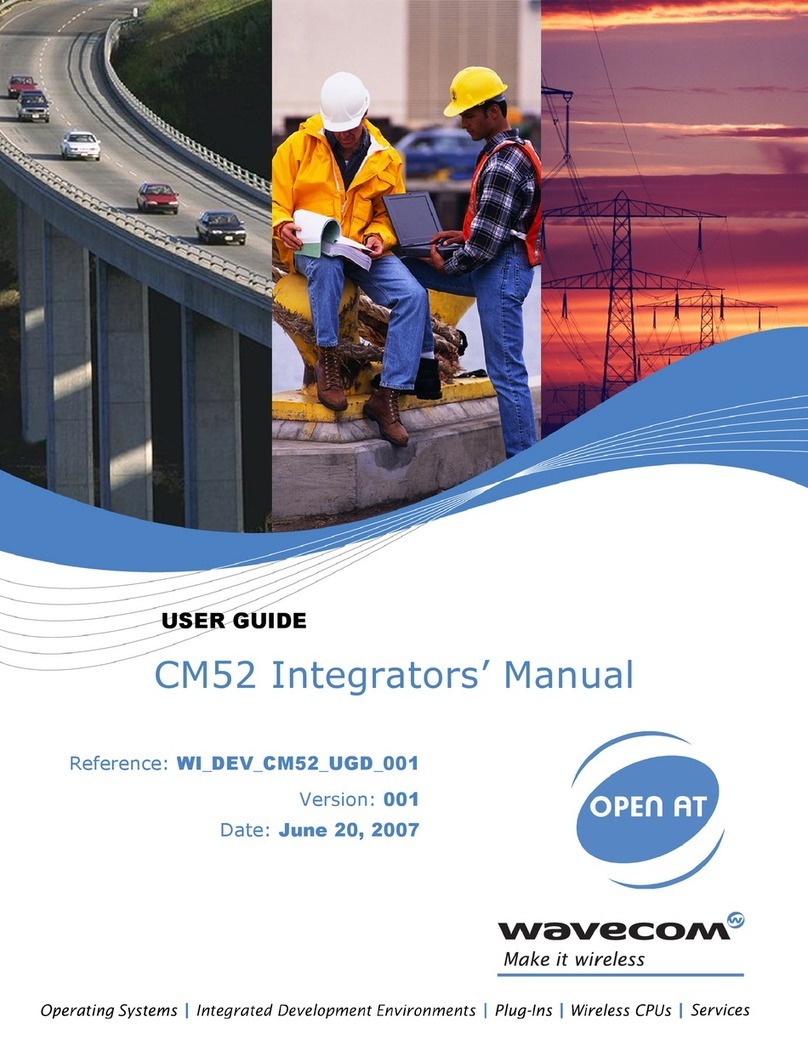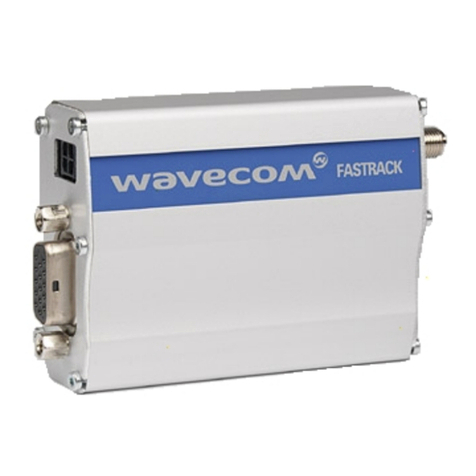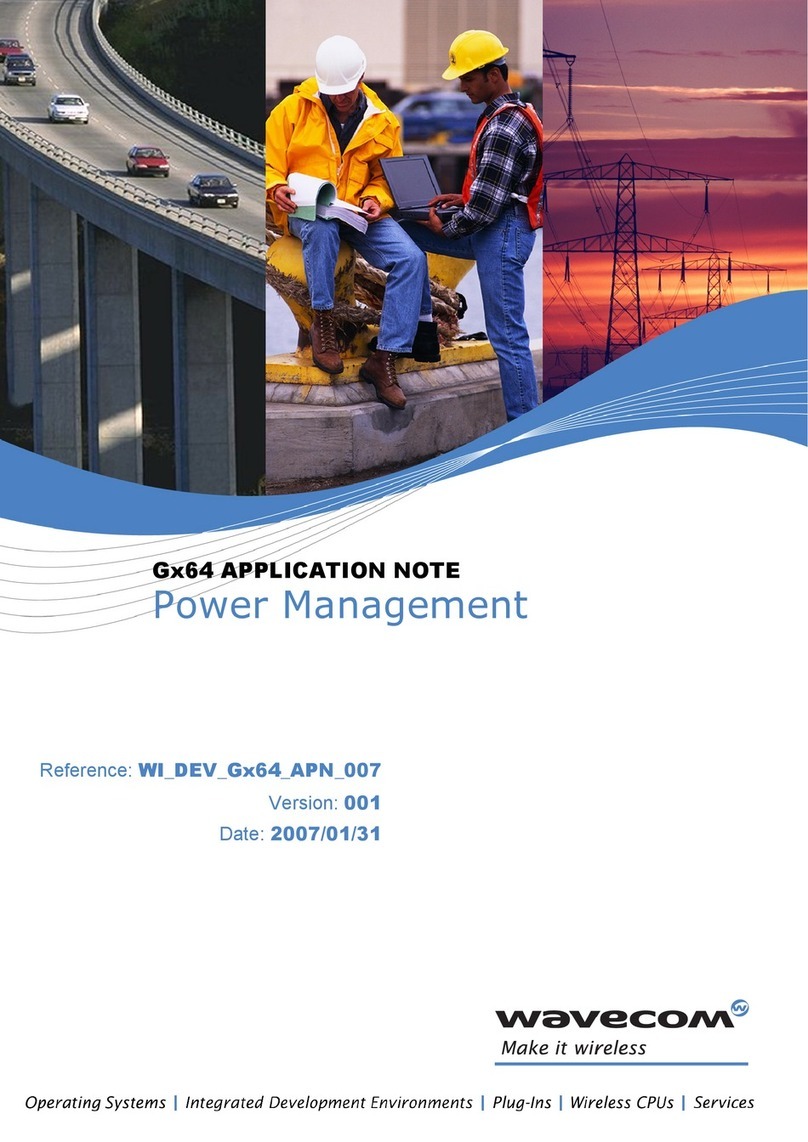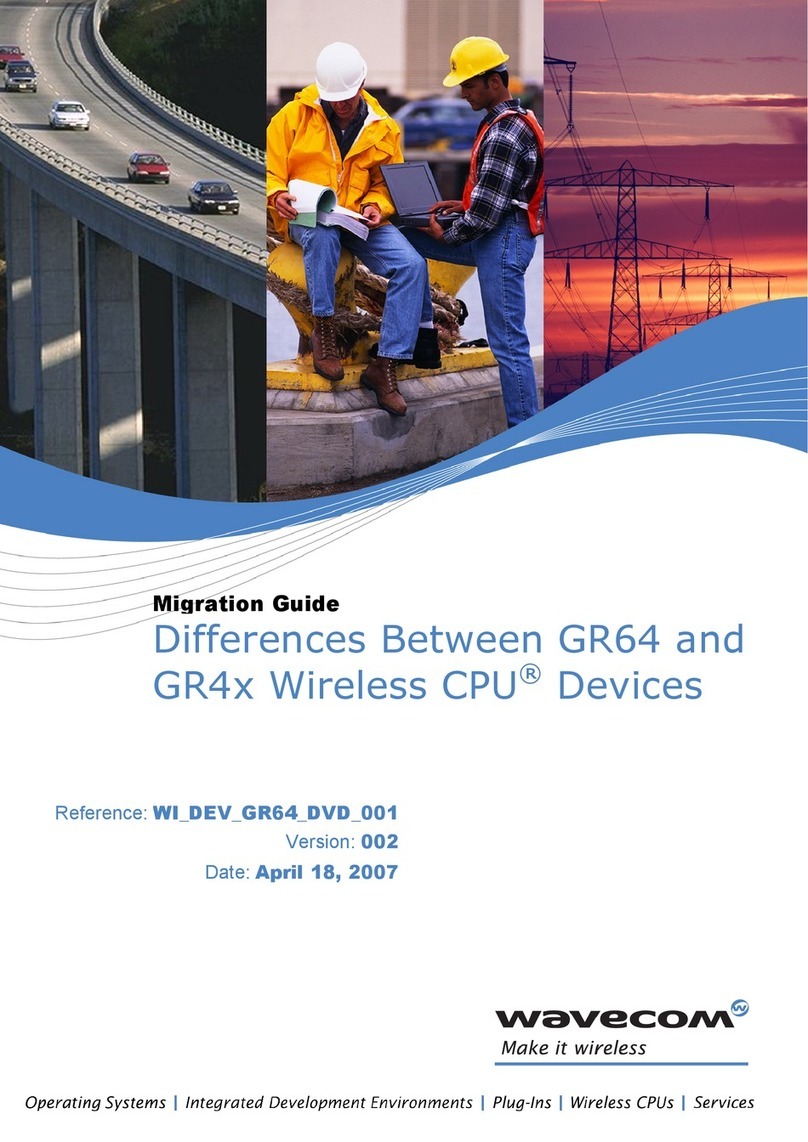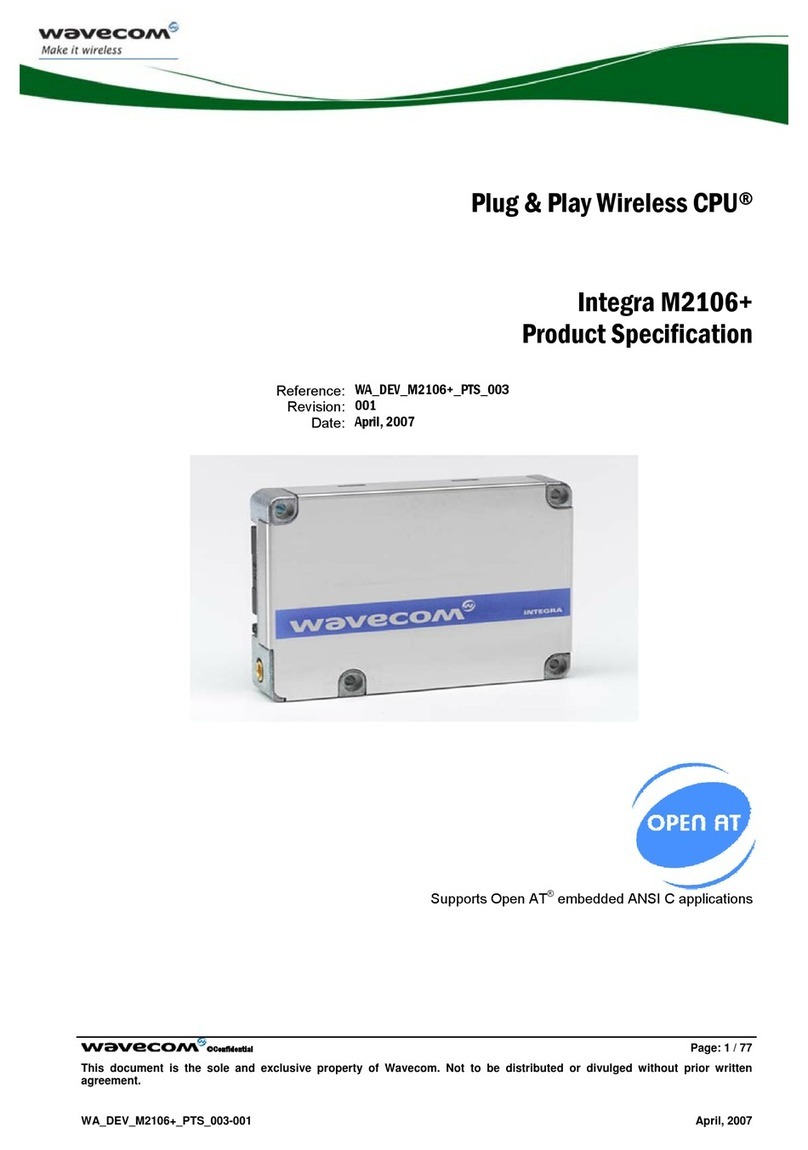Ce document est la propriété exclusive de WAVECOM. Il ne peut être communiqué ou divulgué à des tiers sans son autorisation préalable
.7
PRODUCT MARKING .................................................................................................. 0
3Abbreviations ...................................................................................... 1
4Mechanical Description ........................................................................ 4
4.1
INTERFACE DESCRIPTION........................................................................................... 4
4.
PHYSICAL DIMENSIONS .............................................................................................. 6
5System Connector Interface.................................................................. 8
5.1
OVERVIEW.................................................................................................................. 8
5.
DEALING WITH UNUSED PINS .....................................................................................31
5.3
GENERAL ELECTRICAL AND LOGICAL CHARACTERISTICS............................................33
5.3.1
LEVEL TRANSLATOR INTERFACES .......................................................................34
5.4
GROUNDS..................................................................................................................35
5.4.1
ANALOGUE GROUND (AREF)...............................................................................36
5.4.
COMMON GROUND (GND)..................................................................................36
5.5
REGULATED POWER SUPPLY INPUT (VCC) ...................................................................37
5.6
VOLTAGE REFERENCE (VREF)......................................................................................39
5.6.1
VREF AS AN OUTPUT FROM THE WIRELESS CPU ..................................................40
5.6.
VREF AS AN INPUT TO THE WIRELESS CPU ..........................................................41
5.7
BATTERY CHARGING INPUT (CHG_IN).........................................................................41
5.7.1
CHARGING PROCESS ..........................................................................................43
5.7.
SERIES DIODE .....................................................................................................44
5.7.3
BATTERY SELECTION..........................................................................................44
5.8
POWERING THE WIRELESS CPU ON AND OFF (ON/OFF) ...............................................47
5.8.1
TURNING THE WIRELESS CPU ON........................................................................47
5.8.
TURNING THE WIRELESS CPU OFF.......................................................................49
5.9
ANALOGUE AUDIO.....................................................................................................51
5.9.1
AUXILIARY AUDIO TO WIRELESS CPU (AUXI)........................................................5
5.9.
AUXILIARY AUDIO FROM WIRELESS CPU (AUXO)..................................................53
5.9.3
MICROPHONE SIGNALS (MICIP, MICIN)................................................................54
5.9.4
SPEAKER SIGNALS (EARP, EARN) .........................................................................55
5.10
PCM DIGITAL AUDIO (SSP)......................................................................................56












